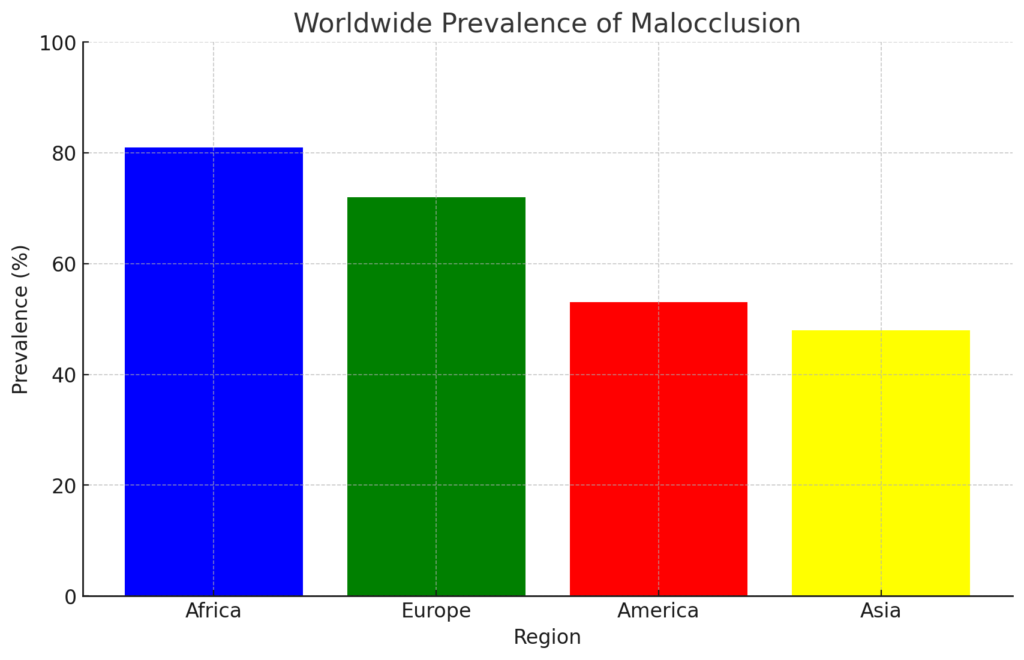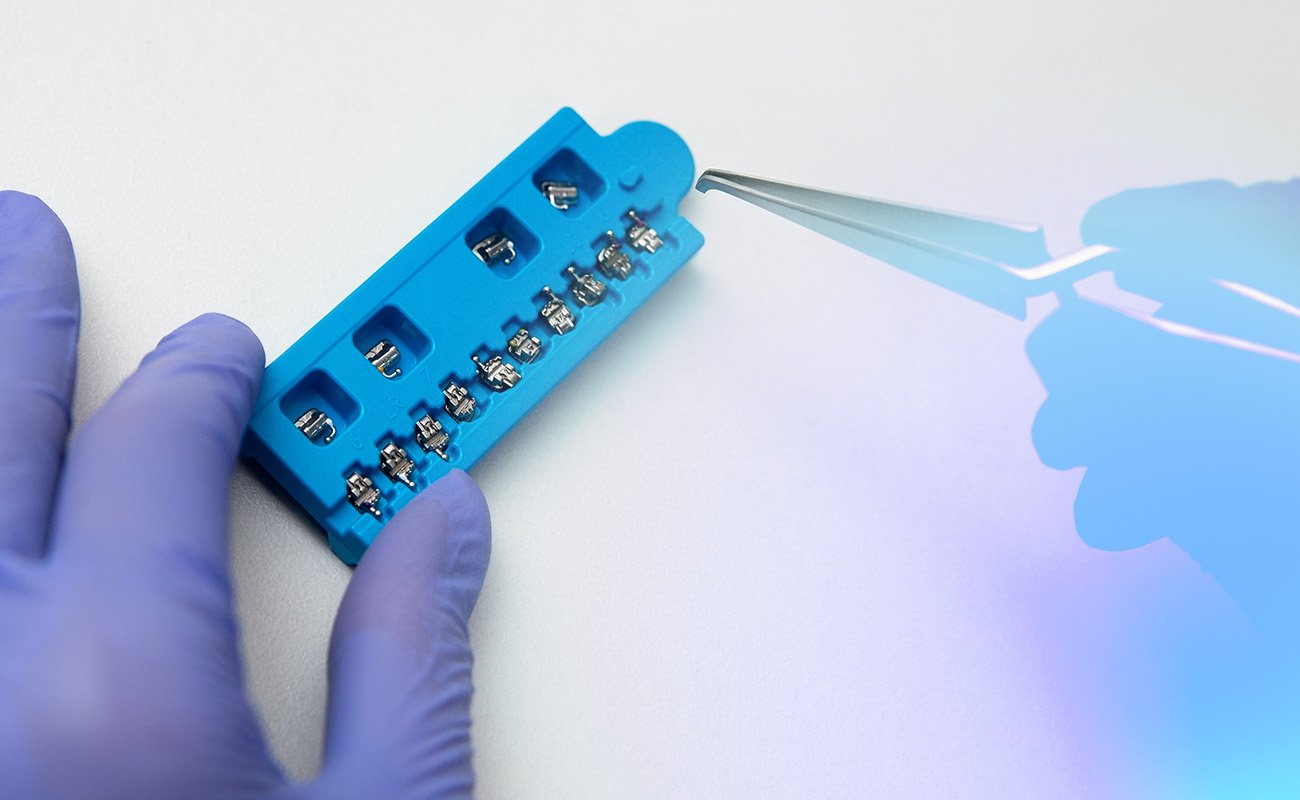Getting that perfect smile is a goal for many, and with the advancements in orthodontic treatments, achieving straighter teeth has become more accessible than ever. The options are varied, from the well-known traditional braces to the sleek and modern clear aligners.
Each method has its own set of benefits and limitations, and it’s important to consider these carefully to find the one that suits you best. In this article, we’ll take a closer look at the most popular options for straightening teeth, discussing both their advantages and potential drawbacks. Whether you’re drawn to a conventional approach or are interested in a more inconspicuous solution, this guide aims to provide you with the information you need to make a well-informed choice.
Types of Misalignments
Teeth misalignments, from crowded teeth to overbites, impact not just our smiles but also how we eat and speak. Each type of misalignment has its causes and effects, making it important to understand them for better oral health.
In this section, we look at the common types of misalignments.

Diastema
A diastema is a noticeable gap between teeth, most commonly seen between the two upper front teeth, although it can occur between any teeth. This dental feature can stem from a variety of causes, such as genetic predispositions, differences in the sizes of teeth and jawbones, or habits like thumb sucking that affect the growth and spacing of teeth.
While many consider diastemas a unique aspect of their smile and a trait of individual beauty, others opt for dental treatments to close the gap for aesthetic or functional reasons.
Worth Knowing
Although it is not possible to prevent all cases of diastema if the cause is due to gum disease or bad habits you can improve the condition by practicing good oral hygiene such as brushing your teeth twice daily, flossing, having regular dental examinations, and avoiding thumb sucking in children.
Overcrowding
Overcrowding of teeth is a common dental issue that affects a significant number of people. It is characterized by a lack of sufficient space in the mouth to accommodate all the teeth, leading to the crowding of teeth. This can result in crooked or overlapping teeth, which can cause a range of problems, including difficulty chewing and speaking, as well as an unattractive smile.
If left untreated, overcrowding can lead to more serious dental issues, including tooth decay, gum disease, and even tooth loss.
Overbite
An overbite, also known as a deep bite, is a common orthodontic issue that can affect the appearance and function of the teeth. It occurs when the top teeth visibly protrude outwards, past the bottom teeth. This can be caused by genetics or thumb-sucking habits in children.
Overbites can lead to various oral health issues if left untreated, such as difficulty chewing and jaw misalignment which can cause a range of issues from ear pain to headaches.
Underbite
An underbite is a condition of the teeth where the lower jaw protrudes out further than the upper jaw. This makes it look like the teeth on the bottom row are lying over the top of the upper teeth.
It can be caused by an array of factors such as genetics, bad habits such as thumb sucking or pacifier usage, jaw size discrepancies, or misaligned teeth.
Open Bite
Open bite is a dental condition where the front teeth do not come together when the mouth is closed. It can cause speech issues and create an unattractive appearance on the lower face. It typically develops during childhood but can be caused by thumb sucking, a misaligned jaw, or even genetics.
Crossbite
Crossbite is when one or more upper teeth bite on the inside of the lower teeth. It can cause jaw joints to be pushed out of position, imbalanced jaw muscles, and changes in how the teeth fit together.
Crossbites can cause difficulty in biting and chewing food. This condition can be caused by various factors such as genetic predisposition, tooth loss, and thumb-sucking habits in children.
How to Straighten Teeth?
Straightening teeth is a relatively straightforward process, although there are many choices when it comes to achieving the desired results. From traditional braces to invisible aligners, anyone who wants to straighten their teeth can find an option that fits their lifestyle and budget. In this section, we will take a look at the top options to straighten teeth.
Metal Braces
Metal braces, a traditional and time-tested method for straightening teeth, consist of high-grade stainless steel brackets that are attached to each tooth and connected by a thin archwire. This wire is periodically tightened by an orthodontist, gently shifting the teeth into the desired position over time.
The main advantages of metal braces include their robustness and effectiveness in treating a wide range of orthodontic issues, from simple misalignments to more complex dental problems. However, they are often more visible than other treatment options, which can be a concern for some individuals, and the metal components can cause discomfort, especially after adjustments.
The cost of metal braces varies widely depending on the geographic location, the complexity of the treatment, and the duration of use, but they are generally among the more affordable orthodontic treatments, often ranging from $3,000 to $7,000 in many areas.
See our article: What is the Difference Between Braces and Retainers?
Clear/ Ceramic Braces
Ceramic braces function similarly to traditional metal braces but with a key aesthetic difference: they use tooth-colored or clear brackets that blend more seamlessly with the teeth, offering a less noticeable orthodontic solution. These braces are made from high-quality ceramic materials designed to withstand the rigors of everyday use while maintaining a more discreet appearance.
One of the major advantages of ceramic braces is their cosmetic appeal. However, ceramic braces can be more fragile than their metal counterparts, requiring patients to be more mindful of their diet and oral hygiene habits to avoid damaging the brackets. They can also be slightly more expensive than metal braces due to the materials used, with costs typically ranging from $4,000 to $8,000, depending on the complexity of the case and treatment duration.
Lingual Braces
Lingual braces are custom-made braces attached to the back side of the teeth, making them virtually invisible from the outside. These appliances are tailored to the individual’s dental anatomy, ensuring a snug fit and effective alignment over time. The major advantage of lingual appliances lies in their discreet placement.
However, they come with challenges; due to their placement, lingual appliances can initially cause discomfort and may affect speech. They also require a higher level of oral hygiene care to prevent food particles and plaque buildup in hard-to-reach areas. Additionally, lingual braces are often more expensive than traditional braces or ceramic alternatives due to the customization and specialized technique required for their installation. Prices can vary widely but typically range from $8,000 to $10,000 or more.
See our Incognito Braces vs Invisalign Comparison.
Self-Ligating Braces
Self-ligating braces represent a modern twist on traditional orthodontic treatment, featuring a built-in mechanism to hold the archwire in place without the need for elastic or metal ties. This design includes brackets made of metal or ceramic that come with a special door or clip, which secures the wire.
One of the key advantages of self-ligating braces is their efficiency; the sliding mechanism of the brackets allows for less friction and easier movement of the teeth, potentially reducing the overall treatment time and the number of dental visits required. Additionally, their design can contribute to better oral hygiene, as the absence of ties makes them easier to clean.
However, while they can be more comfortable and less conspicuous than traditional braces, self-ligating braces may still be visible and can be more costly due to their advanced technology. Prices for self-ligating braces can range from approximately $2,000 to $7,000, varying by location, treatment complexity, and whether metal or ceramic brackets are chosen.
Clear Aligners
Clear aligners are a modern and discreet alternative to traditional braces for straightening teeth. They are custom-built using 3D computer imaging technology to fit snugly over the teeth, made from a clear, flexible, medical-grade plastic that is virtually invisible when worn. The aligners gradually move teeth into their desired position by applying controlled pressure, with each set worn for about two weeks before moving on to the next in the series.
One of the main advantages of clear aligners is their aesthetics, as they are far less noticeable than metal braces. They are also removable, making eating, brushing, and flossing easier and maintaining oral hygiene more straightforward. However, their effectiveness can be limited for more complex dental issues, and the success of the treatment heavily depends on the wearer’s commitment to keeping them in for the recommended 22 hours per day. The cost of clear aligners can vary widely depending on the brand and the length of treatment, typically ranging from $1,000 to $8,000.
See our reviews of the best at-home aligners:
AlignerCo is a well-known brand that provides an affordable aligner program. Their prices are lower than most other aligner brands, with treatment starting at just $945, which also includes free retainers and a teeth whitening kit.

AlignerCo
The cheapest at-home aligners, with monthly plans, no down payment, and considerable discounts.
Check out AlignerCo AlignersNewSmile is one of the newest aligner brands on the market and is known for its affordability. When you purchase their aligners, you receive an impression kit, whitening foam, aligners, and retainers. This brand also provides monthly payment plans without requiring any initial payments, offers a video call option with a specialist to assist with mouth impressions, and has a user-friendly online assessment process.

NewSmile
Affordable at-home treatment with positive reviews offering superior look and comfort.
Check out NewSmile AlignersByte is a well-known brand that offers a lifetime guarantee for your aligners. This means that if your teeth don’t stay in the desired treatment position afterward, you’ll receive additional impression kits, treatment plans, and sets of aligners at no additional cost to correct any misalignments.

Byte
An affordable option with refundable impression kits, free HyperByte, and a Byte for Life guarantee.
Check out Byte AlignersCandid is a highly regarded aligner product with a treatment approach similar to Invisalign. Unlike the other brands mentioned, Candid doesn’t offer a direct-to-home ordering service. Instead, a qualified orthodontist will assess your eligibility for treatment. The advantage is that you won’t need regular appointments after starting treatment. Candid aligners are suitable for addressing both mild and severe spacing issues.

Candid
A hybrid of in-office and at-home treatment that provides 1-on-1 orthodontist support.
Check out Candid AlignersNighttime Aligners
Nighttime aligners offer a discreet and convenient option for straightening teeth, specifically designed for wear during sleep for about 10 hours each night. Constructed from clear, medical-grade plastic, they gently shift teeth into the desired position with minimal disruption to daily life.
The primary advantage of nighttime aligners is their convenience, as they don’t interfere with eating, speaking, or social activities. However, they typically require a longer treatment time compared to all-day aligners, due to the reduced wearing time. Additionally, they might not be suitable for more complex dental issues. In terms of cost, nighttime aligners are generally more expensive than their daytime counterparts, often by a few hundred dollars, with prices varying by brand but usually starting around the $1,000 to $2,000 range.
See our Nighttime versus All-day Aligners Comparison.
Veneers
Veneers are a cosmetic dentistry solution that involves bonding thin, custom-made shells, typically made of porcelain or composite resin, to the front of the teeth to improve their appearance. While not a traditional method for straightening teeth, veneers can create the illusion of a perfectly aligned smile by covering dental imperfections such as gaps, minor misalignments, chips, or discoloration.
The main advantage of veneers is the immediate transformation they offer, coupled with their resistance to stains and ability to mimic the light-reflecting properties of natural teeth. However, the process is irreversible as it requires the removal of a small amount of enamel to accommodate the veneer, which might not be suitable for everyone. Additionally, veneers can be costly, ranging from $250 to $2,500 per tooth, depending on the material and the complexity of the procedure.
See our Aligners Vs Veneers comparison.
Dental Bonding
Dental bonding is a cost-effective cosmetic procedure where a tooth-colored resin material is applied and hardened with a special light, bonding the material to the tooth to improve the appearance of teeth. While primarily used for repairing chipped, fractured, or discolored teeth, dental bonding can also be employed to make teeth look longer, change their shape, or make them appear more aligned, offering a less invasive alternative to veneers or orthodontics for minor cosmetic issues. The process is straightforward, typically requiring no anesthesia (unless accompanying a cavity filling), and can be completed in a single visit.
A significant advantage of dental bonding is its affordability and minimal removal of tooth enamel, preserving more of the natural tooth structure. However, the composite resin used in bonding isn’t as strong or long-lasting as other materials like porcelain, making it susceptible to staining, chipping, or breaking. The cost of dental bonding varies depending on the extent of the procedure but generally ranges from $300 to $600 per tooth.
Options to Straighten Teeth – Which Option is the Best for Me?
Ultimately, there are many options available if you’re looking to straighten your teeth. From old-school metal braces to modern clear aligners, the care you choose should fit both your lifestyle and budget.
Although some of these choices may cost more upfront, they can save you time and energy in the long run by reducing the number of follow-up appointments required. So don’t be afraid to compare different alternatives that suit your needs, you’ll be sure to find an orthodontic option that fits with what’s best for you.
Sources
Lombardo, G., Vena, F., Negri, P., Pagano, S., Barilotti, C., Paglia, L., Colombo, S., Orso, M., Cianetti, S., Worldwide prevalence of malocclusion in the different stages of dentition: A systematic review and meta-analysis. Eur J Paediatr Dent. 2020 Jun;21(2):115-122. DOI: 10.23804/ejpd.2020.21.02.05. Available online at: https://pubmed.ncbi.nlm.nih.gov/32567942/
Thirumoorthy, S.N., et al. Is remote monitoring a reliable method to assess compliance in clear aligner orthodontic treatment?. British Dental Association. (2021). DOI: 10.1038/s41432-021-0231-x. Available online at: https://pubmed.ncbi.nlm.nih.gov/34916648/
Alajmi S., Shaban A, Al-Azemi R. Comparison of short-term oral impacts experienced by patients treated with Invisalign or conventional fixed orthodontic appliances. Medical Principles and Practice. 2019. Available online at: https://pubmed.ncbi.nlm.nih.gov/31842018/
Meer Rownaq Ali, A. B., Conventional Versus Minimally Invasive Veneers: A Systematic Review, Cureus. 2023. DOI: 10.7759/cureus.44638. Available online at: https://www.ncbi.nlm.nih.gov/pmc/articles/PMC10548404/
https://www.medicalnewstoday.com/articles/diastema#prevention

